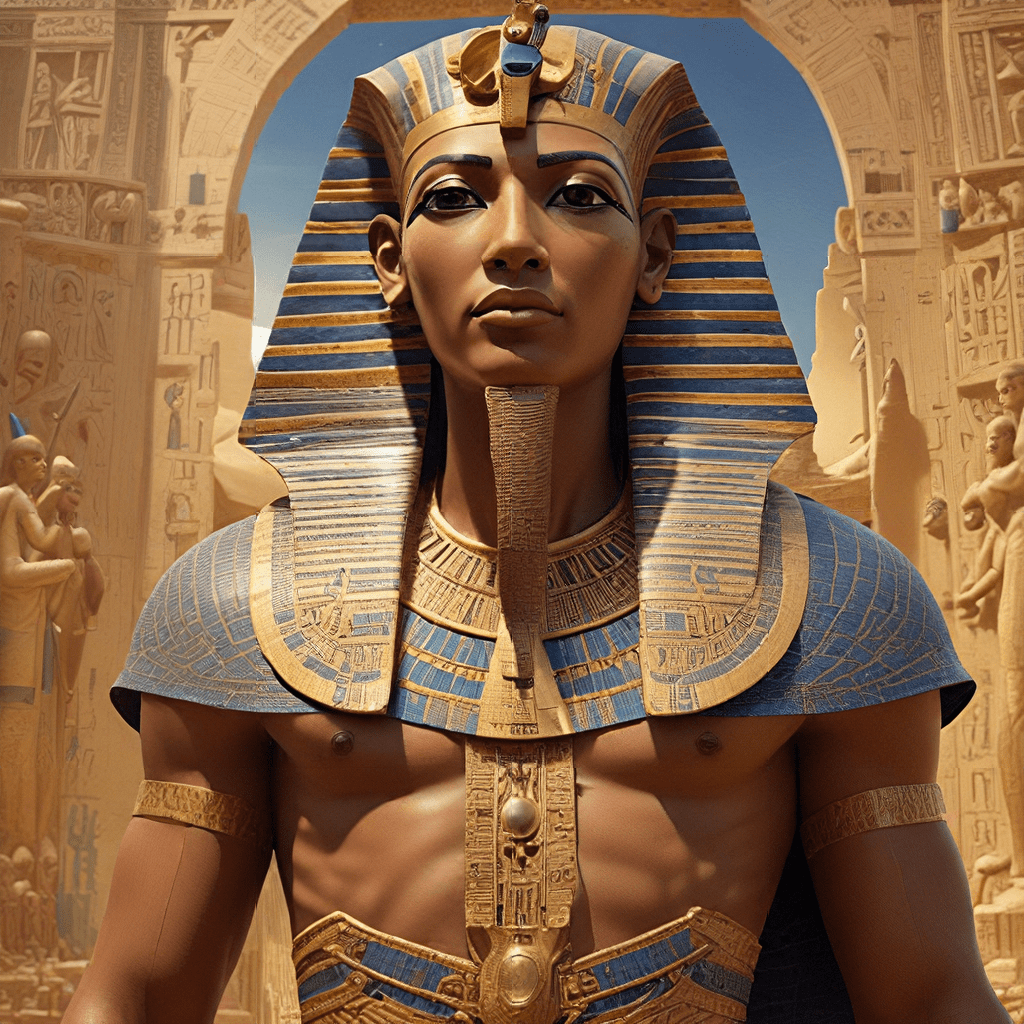1. Introduction: Ptah, the Primeval Craftsman
In the ancient Egyptian pantheon, Ptah held a position of immense power and significance. He was revered as the divine creator, the architect of the universe, and the master craftsman who shaped the world and everything within it. Ptah’s connection to the arts and crafts, particularly metalworking, underscores his role as the ultimate artisan, wielding the tools of creation to bring forth the cosmos.
Ptah’s influence extended beyond the realm of physical creation. He was also seen as the embodiment of the divine will, the source of all ideas and concepts. In this sense, he represented the creative force that underpins existence itself. The intricate relationship between Ptah and the creative process reflects the ancient Egyptians’ profound understanding of the power of artistry and innovation.
2. The Memphis Theology: The Cosmic Blueprint
Ptah’s prominence as the primary creator was particularly strong in Memphis, the ancient capital of Egypt. This influential theological system, known as the Memphis Theology, centered on Ptah’s creation of the world through his divine will and the power of words. The concept of Ptah’s “Heart” and “Tongue” played a crucial role in this process.
Ptah’s “Heart” represented his divine will, the source of his creative intent. His “Tongue,” on the other hand, symbolized the power of the spoken word. Through the utterance of his divine words, Ptah brought forth the world into existence. This process highlights the ancient Egyptian belief in the power of language and the creative potential inherent within it.
The Memphis Theology emphasized the idea of creation as a divine act of craftsmanship. Ptah, as the ultimate artisan, shaped the world from raw materials, carefully crafting its intricate details and establishing its fundamental order. This view of creation reflects the Egyptians’ deep appreciation for the skilled techniques and meticulous planning involved in all forms of craftsmanship.
3. Ptah in the Ennead: The Divine Family
While Ptah’s influence was strongest in Memphis, his importance was acknowledged throughout Egypt. He played a significant role in the Ennead of Heliopolis, the core pantheon of Egyptian deities. Within this divine family, Ptah was often depicted as the father of the god Atum, who himself represented the self-created primeval being. This connection emphasizes Ptah’s foundational role in the creation of the cosmos.
Ptah’s relationship with other deities, like Re, the sun god, and Osiris, the god of the underworld, also reveals his complementary nature. While Re represented the sun’s life-giving energy and Osiris embodied the cycle of death and rebirth, Ptah provided the foundation upon which these other deities operated. His role as the cosmic architect ensured the harmonious balance and interconnectedness of the divine world.
Ptah’s position in the Ennead confirms his widespread recognition as a vital component of the Egyptian pantheon. His presence within this core group of deities highlights his enduring significance and the essential role he played in shaping the divine order.
4. The “Word” of Ptah: The Power of Language
Speech and writing held profound significance in the ancient Egyptian worldview. They were seen as powerful tools for shaping reality, reflecting the belief that words had the ability to bring forth creation. Ptah, as the divine source of all language, embodied this concept.
The ancient Egyptians believed that Ptah created the language of mankind, gifting them the ability to communicate and express their thoughts. This act of divine creation underscored the power of language, both as a tool for expression and a force capable of shaping the world.
The connection between Ptah’s “Heart” and “Tongue” further emphasized the power of his divine will. Through his spoken word, Ptah manifested his creative intent, bringing forth the cosmos and everything within it. This connection highlights the potent relationship between thought, speech, and creation.
5. Ptah as the Master Craftsman: Shaping the World
Ptah’s association with metalworking played a crucial role in shaping his image as a creator. The Egyptians revered metalworking as a highly skilled and intricate craft, requiring precision, knowledge, and the ability to transform raw materials into functional and beautiful objects.
Ptah’s mastery of metalworking reflected his ultimate control over the creative process. He was seen as the divine smith who crafted the tools and instruments necessary for shaping the world. This connection further highlights the importance of craftsmanship in the ancient Egyptian worldview.
The creation of the human body was also attributed to Ptah’s divine artistry. The Egyptians believed that Ptah, as the ultimate master craftsman, sculpted the human form with great care and precision, imbuing it with divine qualities. This view reflects the Egyptians’ profound respect for the human form and their belief in its divine origin.
6. Ptah and the Cosmic Order: The Divine Blueprint
Ptah’s role as the architect of the cosmos extended beyond the initial act of creation. He was also responsible for maintaining the order and balance of the universe, ensuring its continued stability and harmony. Ptah’s divine blueprint, the plan for the universe, reflected the perfection and interconnectedness of all things.
The Egyptians believed that Ptah’s divine plan encompassed every detail of the world, from the movements of the stars to the growth of plants. This blueprint ensured that all aspects of the universe worked together harmoniously, contributing to the overall balance and stability of the cosmos.
Ptah’s role as the cosmic architect underscores the ancient Egyptian belief in the inherent order of the universe and the importance of maintaining that order for the wellbeing of all things. This concept reflects the Egyptians’ deep understanding of the interconnectedness of all aspects of reality, from the smallest details to the grandest cosmic structures.




